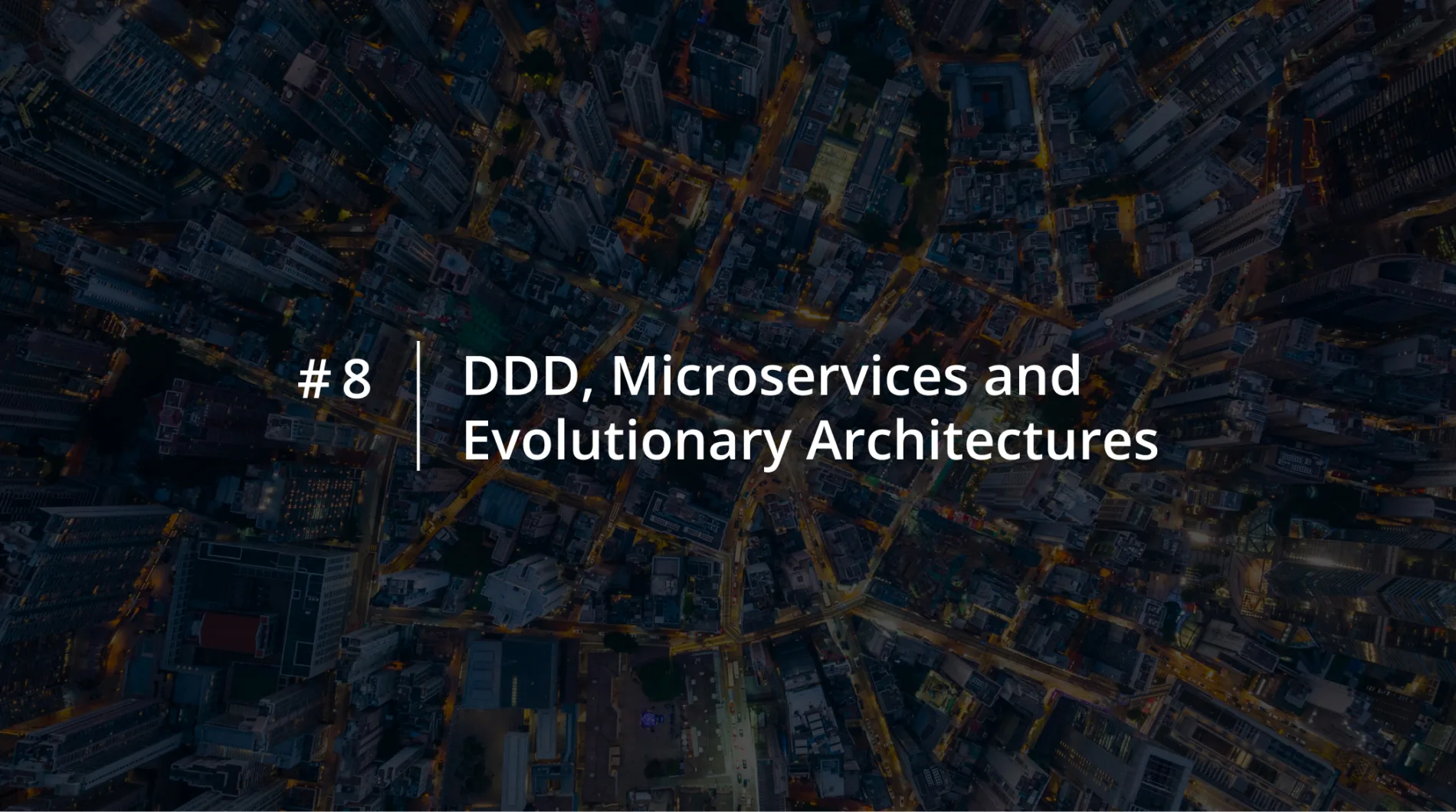DDD, Microservices, and Evolutionary Architectures: Architectural Sustainability
In the previous chapter of this Domain-Driven Design series, we explored the concept of antifragility as it applies to agility and architectural decisions.
In this eighth chapter, I’ll delve into architectural sustainability — what it really means to build an architecture that stands the test of time. As we’ll see, it’s about much more than just code.
Architectures that endure
There’s no such thing as a perfect architecture. There are only architectures that last long enough to remain useful. The difference, more often than not, lies in how sustainable they are over time — in other words, in their ability to be:
- understood,
- adapted,
- evolved,
- and maintained — by real people, in real contexts, under real constraints.
Put simply: an architecture isn’t sustainable because it’s elegant on paper. It’s sustainable if it doesn’t collapse under the weight of time.
Sustainability is more than code
When we hear “sustainable architecture,” we often think immediately of code quality, design patterns, and technical best practices. But code is only part of the equation.
A truly sustainable architecture is:
- documented just enough to be clear,
- discovered more than imposed — emerging naturally from context and domain,
- understood by the whole team, not just its original designers,
- economically sustainable — it doesn’t accumulate crippling debt,
- culturally sustainable — it fits the organization’s mindset and practices.
Just like in industrial design, usability and maintainability are intrinsic to value in software too.
Maintenance as a strategic capability
Software is unique among human products: it doesn’t wear out with use, but with changes in its environment.
A system can run flawlessly today yet be obsolete tomorrow — not because of bugs, but because the world around it has changed: requirements, users, business models, or technology.
True sustainability happens when:
- the architecture doesn’t resist change but enables it,
- the team isn’t afraid to touch the code because it’s understandable,
- technical debt is managed intentionally and doesn’t silently snowball.
The role of technical debt
Technical debt isn’t inherently bad. Like financial debt, it becomes a problem only when it’s unintentional or left unpaid.
A sustainable system:
- takes on technical debt deliberately (tactical choices),
- measures its impact (tests, maintainability metrics, code churn),
- reduces it progressively (continuous refactoring, improvement cycles),
- discusses it openly (transparent backlogs, technical retrospectives).
A matter of people
There’s no sustainable architecture without a sustainable team.
A good architecture should:
- allow for quick onboarding,
- minimize the risk of knowledge silos,
- foster collaboration across domains and disciplines (dev, ops, business, security).
Complex systems rarely fail due to lack of abstraction — they fail due to lack of communication.
Practices for sustainability
A few practical habits help keep things on track long-term:
- ADR (Architecture Decision Records):
Lightweight, traceable documentation of architectural decisions. - Architecture Health Checks:
Regular assessments: what’s holding up well? What isn’t? Why? - Evolvability Score / Fitness Functions:
Metrics that measure how well the architecture supports change. - Continuous Structural Refactoring:
Not just polishing code but improving the boundaries between modules and contexts. - Domain Alignment:
The architecture stays in sync with the business only if teams stay in sync with the people who live the domain daily.
Architecture as an ongoing conversation
Perhaps the most common mistake is treating architecture as a one-off decision.
In reality, it’s a continuous conversation — between people, between teams, and between code and reality.
A sustainable architecture is alive:
- it adapts without losing its essence,
- it evolves without losing its purpose,
- it embraces change without collapsing.
Conclusion: beyond design, toward responsibility
We’ve talked about DDD, modules, patterns, events, versioning, rollbacks. But in the end, it all boils down to a single question:
“Will this system still be useful six months from now? Two years from now? Can we evolve it with confidence?”
Architectural sustainability isn’t a technique — it’s a form of shared responsibility.
It’s the result of mindful technical decisions, a healthy team culture, and constant collaboration.
In this sense, Domain-Driven Design is more than a technical guide: it’s a lens for seeing the system, the context — and, above all, the people who inhabit it — more clearly.
In the next and penultimate episode I will try to give my personal opinion on an often confusing topic: Event Sourcing is not Event Streaming.
